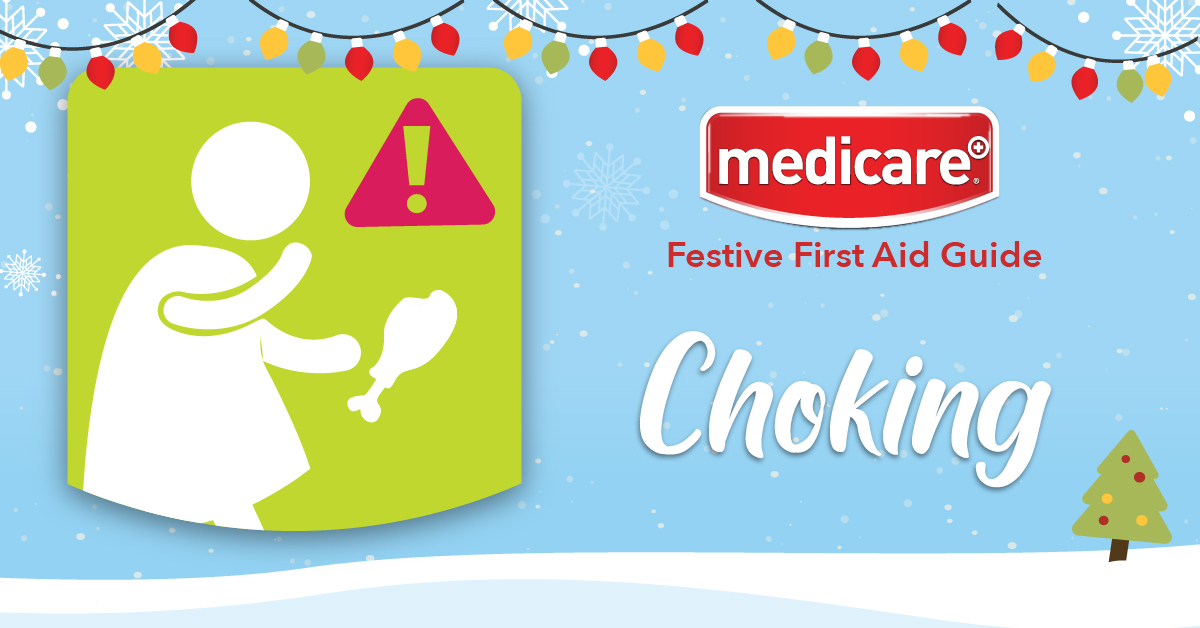Headlines
- Gentle Daily Ear Care with Medicare Ear Spray
- Breathe Easy with Medicare Nasal Spray
- Fleming Medical Renews Support for Irish Heart Foundation’s “Before Damage is Done” Campaign with over €25K Donation
- First Response for Minor Burns: Why MD508 Medicare Burn Spray Belongs in Every Medicine Cabinet
- Step Smart: Introducing the New Medicare® Footcare Range
The 12 Injuries of Christmas - Choking
29 November 2019

Choking can be a common injury at Christmas. Most incidents occur around eating large amount of food while other choking incidents that may occur involve babies/ toddlers picking up random items from under the Christmas tree
Choking can be classified as mild or severe and is when an object has become partially or completely stuck in the throat. This causes the muscles in the throat to spasm, making breathing difficult or impossible.
It is vital to keep airways (nose, mouth, throat or lungs) open so that air can travel through to our lungs and transfer oxygen into our blood. A blockage to the airway is a life-threatening emergency that should be immediately treated.
How to treat a choking adult/child
- Encourage the casualty to bend forward from the waist and support them with one hand.
- With the other hand, deliver up to 5 sharp back blows with the heel of your hand. This should be done between the choking victim’s shoulder blades.
- If the obstruction isn’t cleared after the back blows have been completed, you must stand behind the casualty and place both of your arms around them. Encourage them to lean forward, as before, and then provide them with 5 abdominal thrusts. This can be done by placing one fist between the belly button and the bottom of the breastbone and the other fist on top of that. Pull the fists sharply inwards and upwards to deliver an abdominal thrust. This should be carried out 5 times too.
- Check the casualty’s mouth for obstructions and repeat 5 back blows and 5 abdominal thrusts up to 3 times. If the airway is still not cleared, call for an ambulance and continue treating the patient until help arrives.
- If they become unresponsive, then you must prepare to resuscitate.
How to treat a choking infant
- For patients under 1, treatment for choking must be carried out differently to support the baby’s head.
- Lay the infant down along your forearm, so that their head is lower than their chest.
- Deliver 5 back blows with the heel of one hand between the infant’s shoulder blades. Check their mouth for obstructions between each back blow.
- If the airway is still blocked, then you must turn the infant onto their back and place two fingers on the breastbone, thrusting sharply inwards and upwards. Repeat this movement up to 5 times, again checking for obstructions after each thrust.
- If the blockage has not cleared, repeat steps 2 and 3 up to 3 more times.
- Call for an ambulance if the blockage is still there and be prepared to perform CPR if the infant becomes unresponsive.

 Fleming Medical UK
Fleming Medical UK
